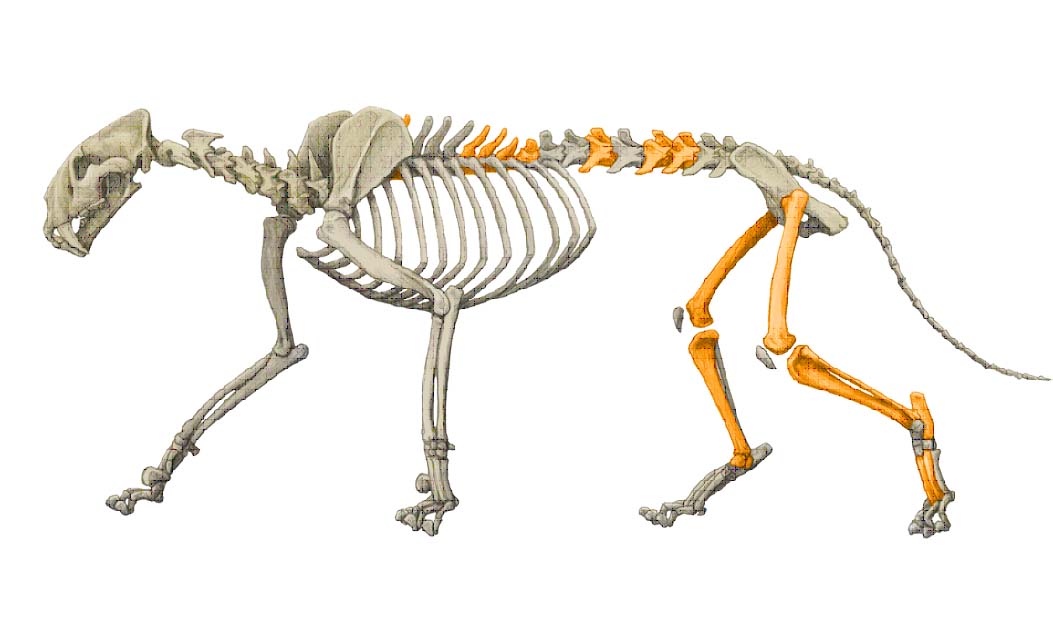New research sheds light on carnivoran diversity and diseases that afflicted sabretooth cats over 5-million-years-ago. The fossils studied were from the Mio-Pliocene (5,2-million years ago) fossil site called Langebaanweg (West Coast Fossil Park) on the West Coast of South Africa where at least three different types of sabretooth cats have been recovered.
Sabretooth cats, with their distinctive, large sabre-like canines that project out of their upper jaws like steak knives, are charismatic carnivores known globally in the fossil record. The previously undescribed sabretooth cat (felid) fossil remains were discovered by Dr Alberto Valenciano, a former postdoctoral fellow at the University of Cape Town (UCT) and the Iziko South African Museum, now based at University of Zaragoza, while examining the collections at the Iziko South African Museum.
Shortly after, UCT Palaeobiologist Professor Anusuya Chinsamy-Turan and her then honours student Caitlin Rabe began their work on the remains. They found that this sabretooth cat lies between two previously described genera and, that the large cat was afflicted with osteoarthritis. These and other findings have been published in the international journal Papers in Palaeontology.
Now a doctoral candidate at UCT, Rabe explains how the research process began: “We cast our net wide, by comparing our fossils to those of many sabretooth species from around the world, and we also included modern representatives in our analysis, like the African Lion (Panthera leo), to better understand what our cat looked like relative to the rest of the felid family.”
This comparative analysis revealed that the Langebaanweg sabretooth had similar limb bone proportions to two known African and European sabretooths – Lokotunjailurus emageritus from Kenya, and Machairodus aphanistus from Spain.
Rabe adds: “These results were surprising because despite being a large-bodied cat, our specimen was different to the large-bodied genus at Langebaanweg Amphimachairodus.”
While the genus Machairodus has been previously reported in Langebaanweg, the genus Lokotunjailurus is currently known only from the Lothagam fossil site in Kenya, and Toros-Menalla in Chad.
Co-author Valenciano shares: “Our analyses showed that the fossils did not belong to the biggest known sabretooth cat from Langebaanweg, but that it was a new large-sized cat. This indicates that we had two large-bodied sabretooth cats that were living on the West Coast of South Africa about five-million-years-ago.”
“This is not the end of the fascinating story of the diversity of the sabretooth cats from Langebaanweg. There are still several other undescribed sabretooth fossils (including skulls and mandibles) that are crying out from some research attention,” adds Professor Chinsamy-Turan. In addition to identifying the sabretooth, Rabe also described the disfigured, diseased bones and was able to deduce the animal was afflicted with osteoarthritis.
“The erosive pathological features visible in the sabretooth indicate that it suffered from severe osteoarthritis. Just looking at the bones it is obvious that something is seriously wrong. Up close, one can see that once the cartilage had worn away, the bones were in direct contact with one another,” explains Rabe.
By studying the overall skeleton and the extent and severity of the disease, the researchers deduced that the Langebaanweg sabretooth would have been an old individual that had suffered with arthritis for a long time. The bony spurs in the lumbar vertebra and deformation of the ankle bone suggest that the animal must have endured considerable pain and that it may have been lame and most likely unable to hunt with great success. These findings suggest that the animal’s long-term survival may have depended on it being part of a social group or at the very least that it changed to a scavenging lifestyle.
Professor Chinsamy-Turan said: “This palaeobiological research on this enigmatic 5.2-million-year-old sabretooth cat demonstrates how much we can learn about our prehistoric biodiversity by studying their fossilised remains.”
The Langebaanweg site provides a unique window into the Western Cape province as it was over five million years ago and offers many opportunities to understand the remarkable African biodiversity of the Neogene period.
Featured picture: Reconstruction of a sabretooth skeleton highlighting the bones that were examined in this study.
Art: Maricio Anont (2013)

